It takes thousands of people to build a lunar spacecraft, let’s meet them and see what they do. Today: Dr Anna Chrobry at Airbus.
What is your name and role in the European Service Module programme?
Hello, I’m Dr Anna Chrobry and my role is Project Management Officer (PMO).
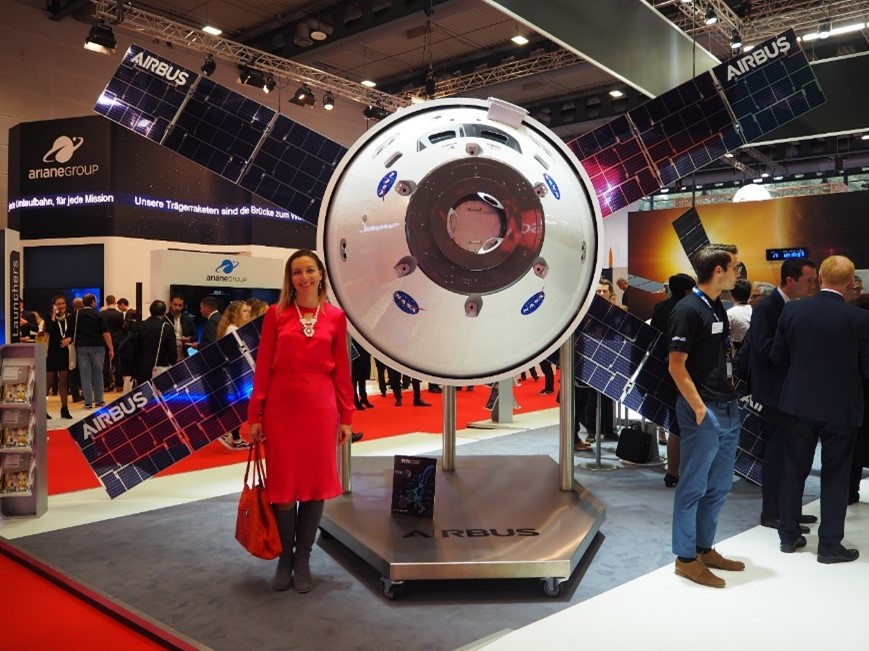
Dr Anna Chrobry at the Space Tech Expo in Bremen, Germany. Credit: A. Chrobry
How long have you been involved in European Service Module’s development and what were/are your tasks?
I’ve been in my current role as PMO for two years. Previously I was working for several months as a thermal engineer designing tailor-made spacecraft insulation like in a space workshop. These thermal mats protect the rear part of the Service Module from the heat radiation of the main engine and auxiliary engines.
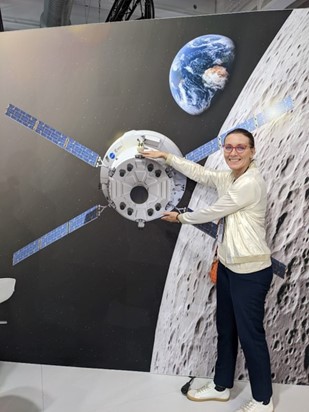
Dr Anna Chrobry points out the position of the thermal insulation on a model of the European Service Module. Credit: A. Chrobry
Now, as PMO and the ‘co-pilot’ of the project manager, I’ve taken on the exciting task of ensuring Airbus project management standards and operating practices are not only upheld but clearly defined throughout the entire project lifecycle. The work involves driving excellence in scheduling, risk and opportunity management, documentation and data integrity as well as financial oversight. Every day in this dynamic role presents new challenges and opportunities to innovate and make a significant impact on the project’s success.
What is your educational background and prior work experience? How did you come to work on the European Service Module?
Similarly to my compatriot Professor Marie Skłodowska-Curie, I became an experimental physicist. At the beginning of my studies, I was particularly interested in nuclear physics. Then, I became captivated by the human impact on the Earth’s atmosphere and climate, which led to me pursuing a PhD in environmental physics in Bremen, a hub for the aerospace industry.
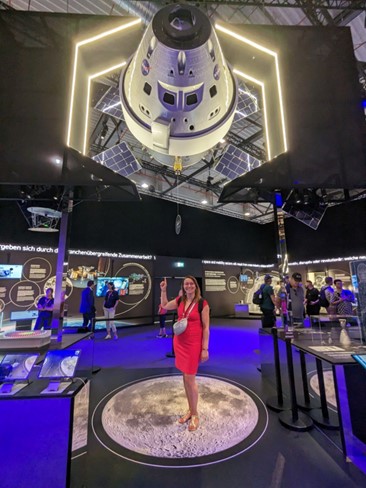
Dr Anna Chrobry at ILA, the Berlin airshow, in 2024, in the Space Exploration Exhibition Heels on the Moon. Credit: A. Chrobry
Though I was surrounded by strong female role models, I may have been one of the first women to leave my community without being married, to pursue a PhD in physics and work in the aerospace industry abroad. I had no role model in that sense, and I had to face this challenge on my own.
Regarding my lunar passion, I was inspired by a couple of Polish astronomers, Johannes and Elisabeth Hevelius, who were driven too by a passion for the night sky. They observed and recorded the positions of stars and constellations over several years and produced the most detailed study of their time of the Moon, known as the Selenographia, published in 1647.
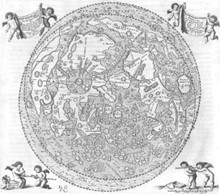
Hevelius map of the Moon, the Selenographia.
What is the most notable or memorable moment during your time working on the European Service Module?
Of course, the first launch and seeing NASA’s SLS rocket on the launchpad with the Moon, its final destination!
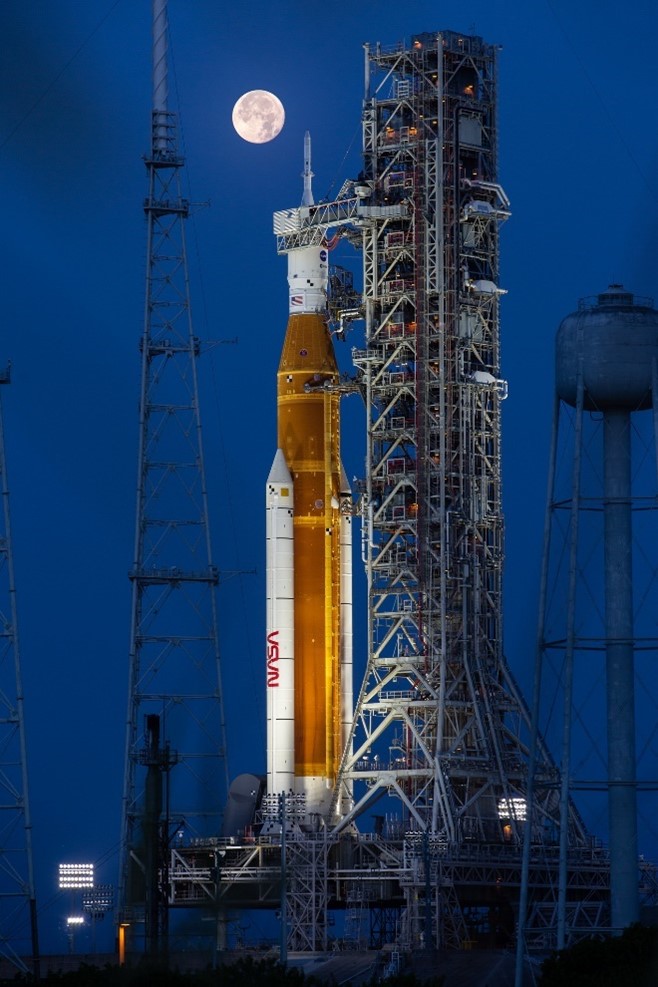
NASA’s superheavy Space Launch System SLS rocket before the launch of Artemis I. Credit: NASA
During the first Artemis I mission, I enjoyed the epic ‘selfies’ of Orion with the Moon and Earth we received almost in real-time, with the white thermal insulation clearly visible. The spacecraft performance was outstanding and learning that everything worked perfectly was very rewarding.
Artemis is such a challenging mission and yet we have succeeded – across borders – in developing a fully integrated human-rated spacecraft, with most critical functions dependent and interconnected across American and European systems.
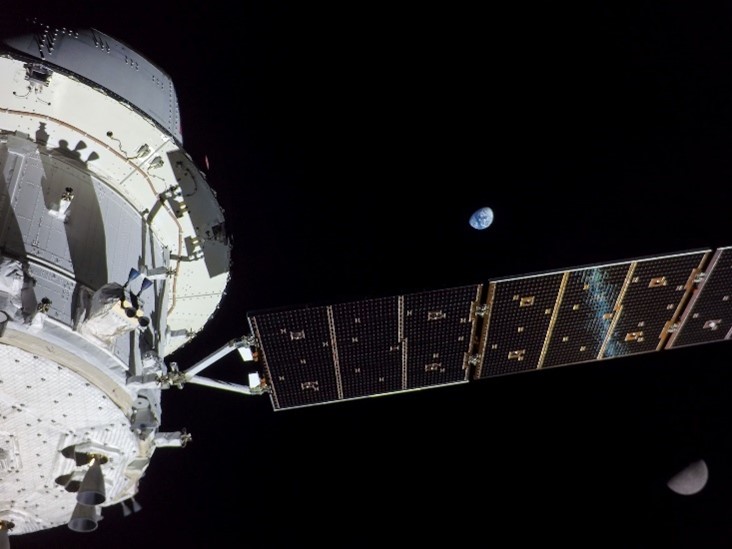
A portrait of Earth, the Moon and Orion and its European Service Module during Artemis I. Credit: NASA
What does it mean to you to be part of the larger team offering humans a place to stay around the Moon?
I am very excited that my new homeland, Germany, and my country of origin, Poland, have both joined the Artemis Accords. I firmly believe that joining forces across Europe is crucial for the continued growth of the space sector, especially between space legacy players like Germany and emerging players like Poland.
The Moon is just the stepping stone. The quest to return humans to the Moon as the next step in humankind’s exploration of space is more alive than ever.
Being part of this endeavour represents a commitment to advancing scientific knowledge, expanding our understanding of the universe, paving the way for future generations to explore and inhabit other celestial bodies.
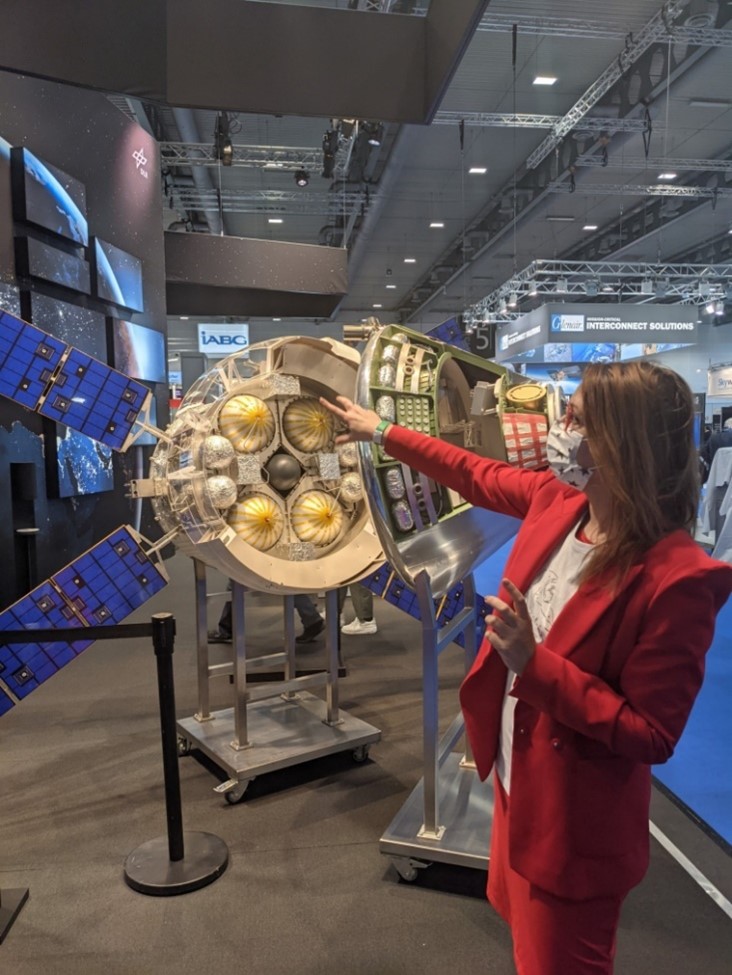
Dr Anna Chrobry at Space Tech Expo in Bremen. Credit: A. Chrobry
What is one thing you’d like the European public to know about your job?
One of the thrilling aspects of my job is outreach, where I get to promote aerospace by writing papers for prestigious conferences like the International Astronautical Congress (IAC). I engage with enthusiasts, unravelling the wonders of space and its historical significance, inspiring a deeper appreciation for the field as well as attracting and motivating young minds to pursue careers in aerospace, ensuring a bright and innovative future for the field.
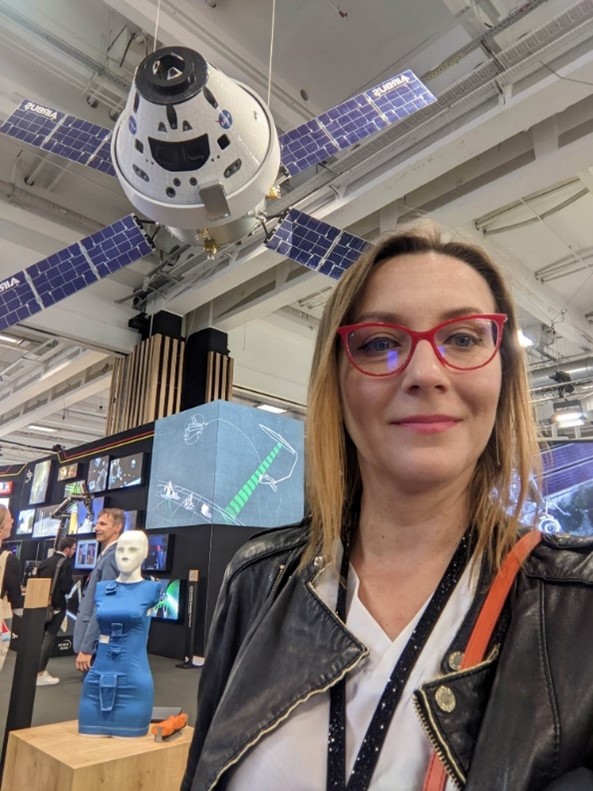
Dr Anna Chrobry at IAC in Paris with Helga and Zohar, the mannequins that measured radiation exposure throughout Artemis I. Credit: A. Chrobry
As the chairperson of Yuri’s Night Bremen, a non-profit organisation dedicated to promoting the aerospace sector, I had the exciting opportunity to organise space concerts. This unique event aimed at bringing the captivating topic of the Artemis Moon missions to a broader audience in Bremen and featured live performances by my team members who are actual engineers from Bremen’s Orion Programme and Artemis missions (like Annemarie or Jan-Hendrik).
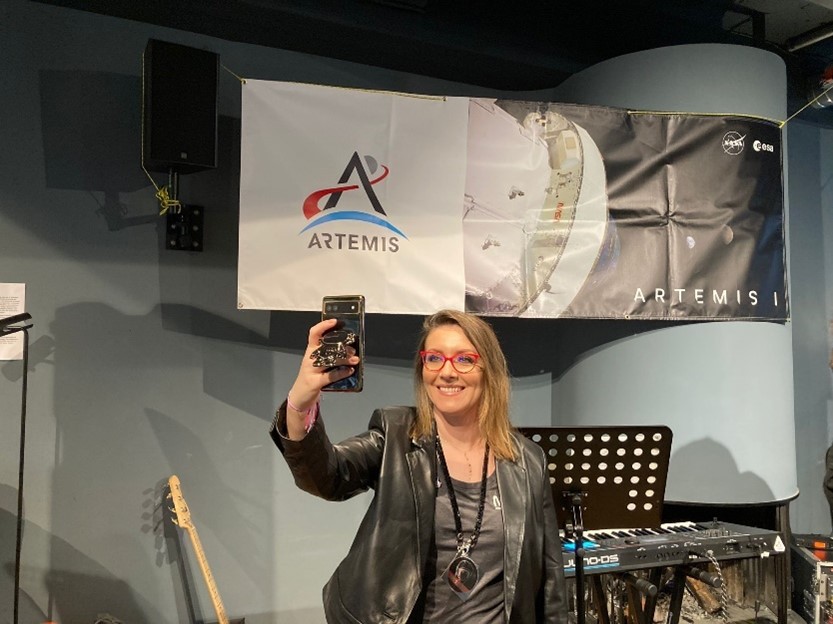
A selfie at Yuri’s Night Bremen. Credit: A. Chrobry
Do you have any advice for future generations interested in space exploration?
As a regular mentor of graduates and young professionals, I always tailor advice to their specific individual aspirations and dreams, but I always repeat: “Lift off, may gravity never stop you from achieving anything. Sometimes you just need to build a stronger rocket”.
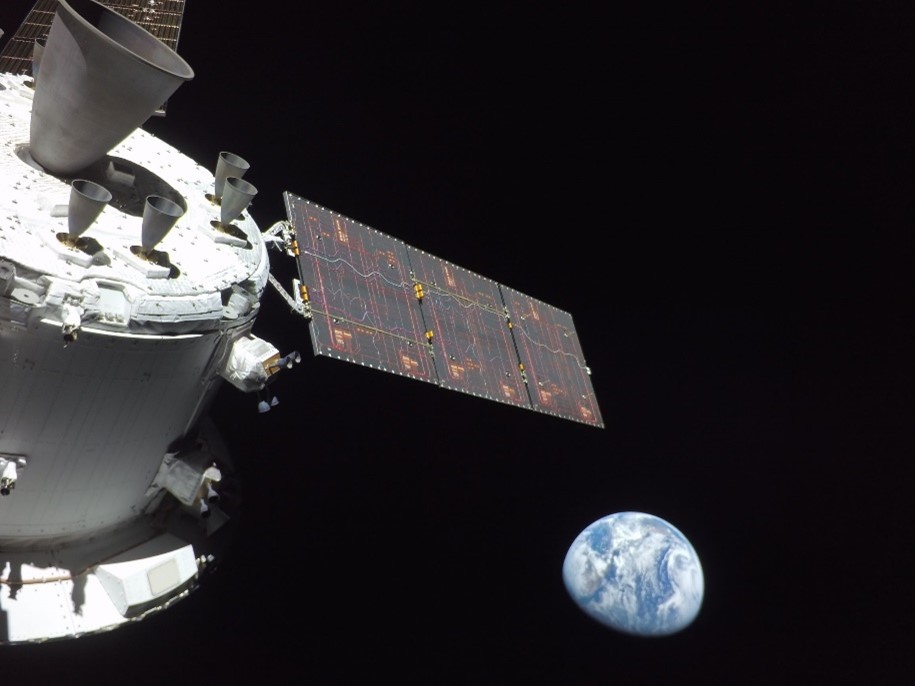
The European Service Module, which propels NASA’s Orion spacecraft, is integrated at Airbus in Bremen.

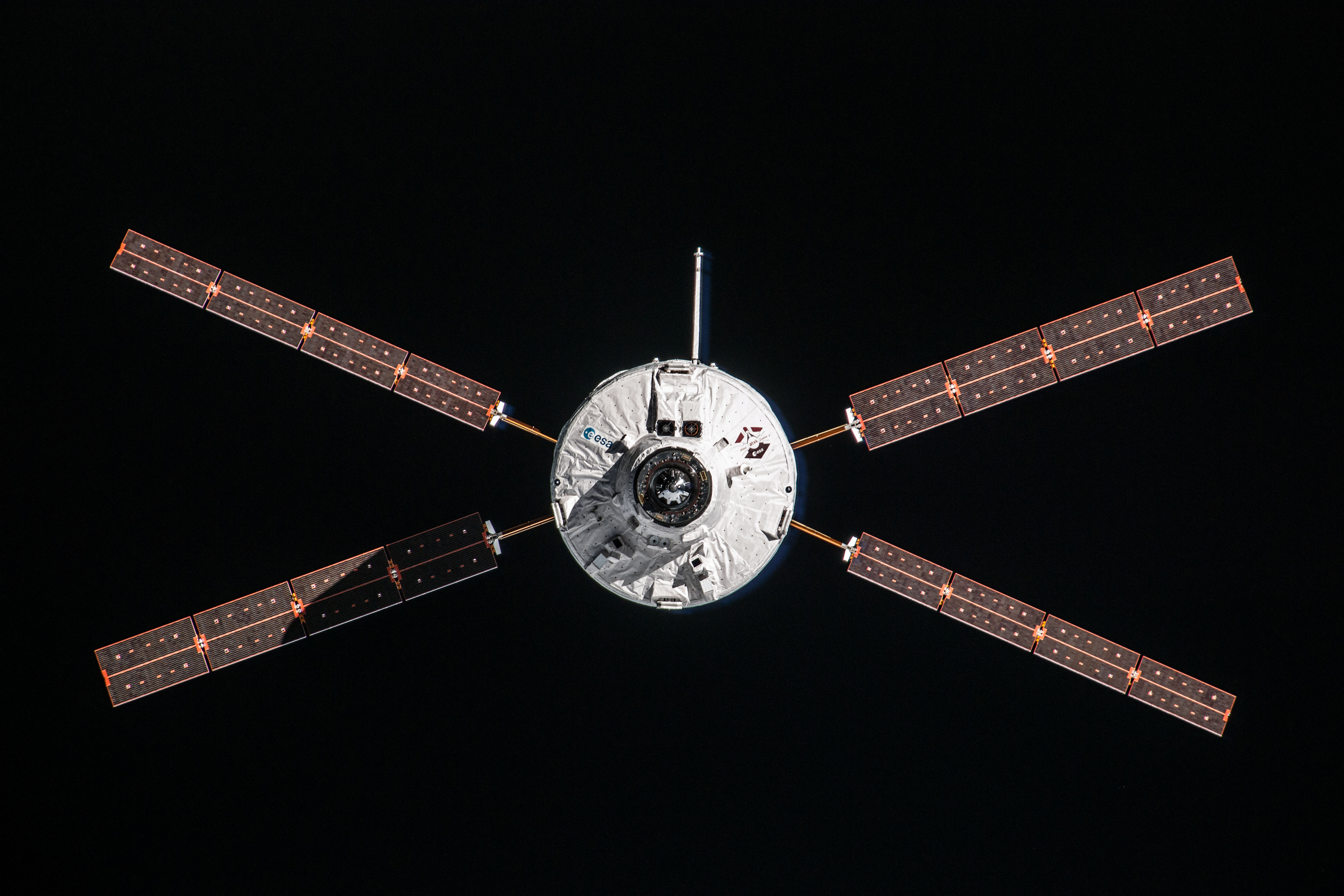 Automated Transfer Vehicle page
Automated Transfer Vehicle page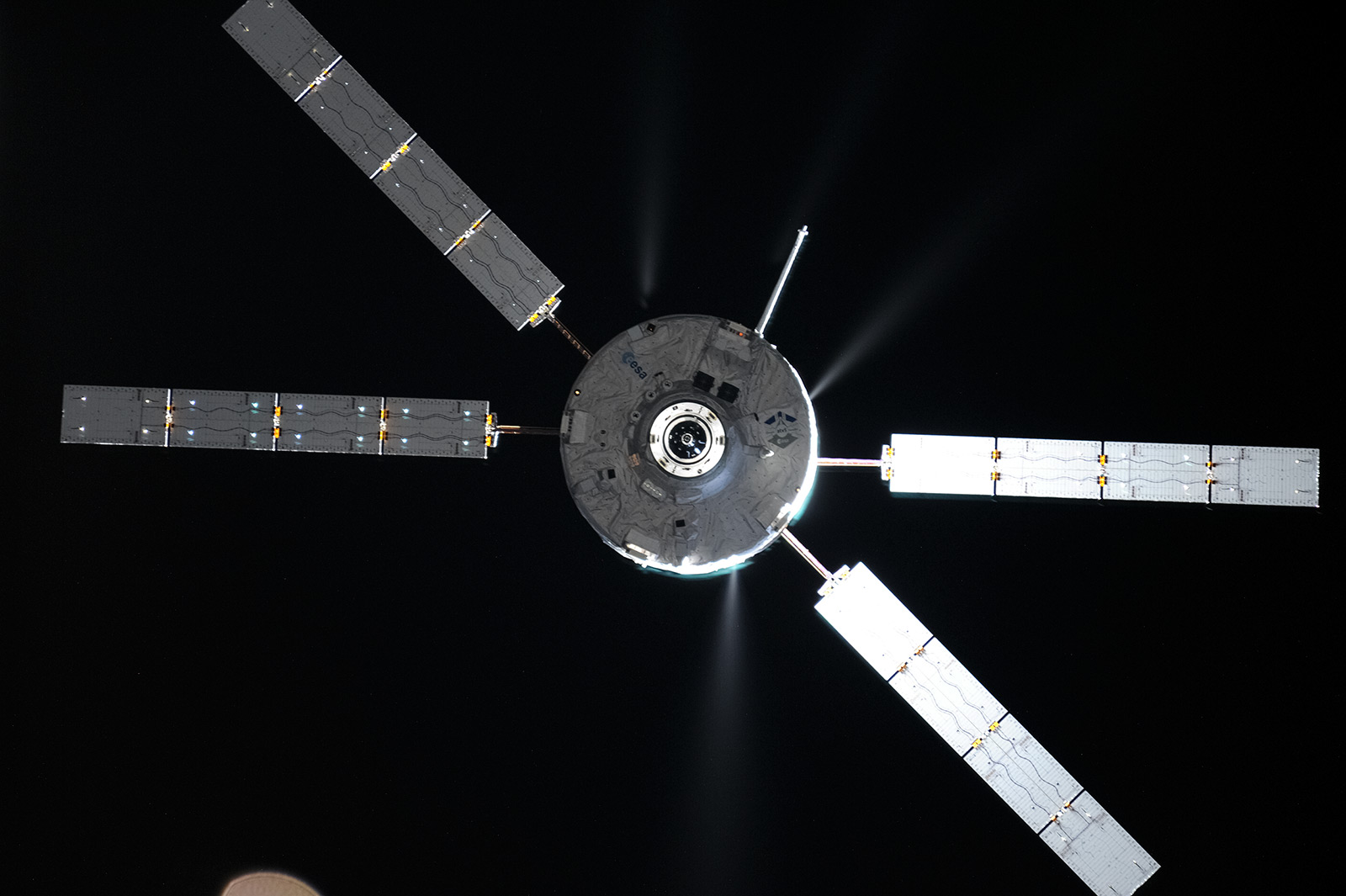 ATV blog archive
ATV blog archive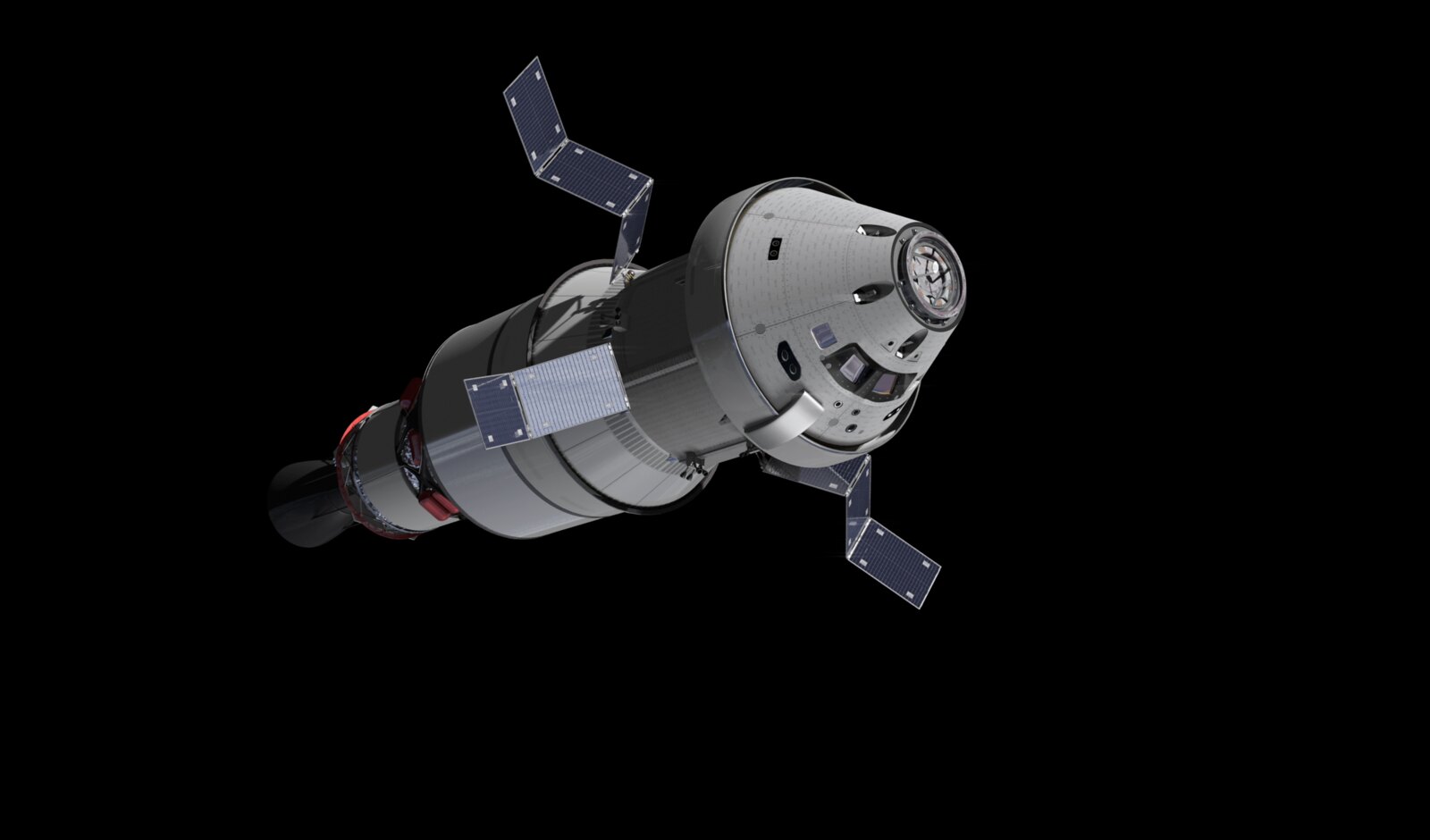
Discussion: no comments